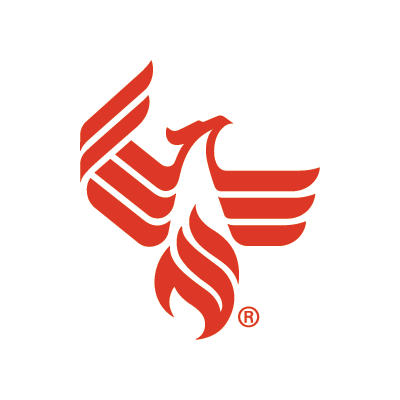Kanban vs. Scrum in Agile project management

For anyone getting involved in Agile project management, software development, sprint planning or any other facet of product development and cross-functional project planning, Scrum or Kanban are probably on their radar.
Understanding Agile approach and Kanban vs. Scrum frameworks
When considering Kanban vs. Scrum methodologies, it’s important to understand that each is useful for project management. For Agile teams, product owners, or other groups working on projects in the corporate or small business world, each can help with cycle time and clearing out product backlog. They both allow for two-week sprints with regular team stand-up meetings and other highly efficient methodologies to enable a speedy work process.
But which framework is more popular, which one works better for a company and team, and how can teams learn to use one or the other effectively?
What is Agile?
Agile is an approach that is increasingly used by companies worldwide to make their in-house/internal projects more efficient, which in turn helps teams advance projects to the completion stage faster.
In practical use, Agile project management can be used to improve the cycle time on a given internal process or clear out a product backlog, such as when customers are demanding more products than a company can crank out in time to fulfill their orders, and the company needs to figure out a plan to speed things up and pursue continuous improvement.
When Agile was introduced, it was designed specifically to improve the process of developing new computer software, but it has since been applied to virtually every type of business out there, including healthcare companies, transportation, creative projects such as producing television shows, and so on.
What is Kanban?
The Kanban board, translated from Japanese, where “Kanban” means "visual," was introduced in the mid-20th century as a tool for Toyota’s assembly line in scheduling its manufacturing processes, although it wasn’t called a Kanban board until the Kanban method was introduced in 2007.
The Kanban method is a type of Agile framework organized around the visual tool of a Kanban board. It is a prominent framework for implementing Agile software development and DevOps.
It necessitates complete work openness and real-time capacity communication. Team members can view the status of each task at any time thanks to the visual representation of work items on a Kanban board.
What is Scrum?
Those who have ever tried to lead a group project are probably familiar with just how challenging it can be. For as long as there have been project management problems, there have been attempts at solutions. Scrum is a time-based method growing in popularity due to its adaptability.
Scrum methodology or Scrum processes may help teams with self-organization while reducing stress, problems and the chances a collaborative project will fail.
That’s mainly because Scrum management conducted by a Scrum Master, is a specialized process that necessitates training, potentially from an accredited university (either with traditional, in-person classes or straightforward online workshops, certificate programs, and classes.)
Scrum management can come in handy, for example, when an unforseen issue stalls progress or the work being produced doesn’t meet the expected outcome. Problems can arise when the team and stakeholders aren’t on the same page.
As the head of a Scrum team, the Scrum Master is in charge of promoting a project. advising the team and product owner and making sure team members adhere to all Agile procedures.
What are the differences between Kanban vs. Scrum?
One of the big differences between Kanban and Scrum is that Scrum involves dividing projects into pre-defined segments and then organizing segments into time-boxed sprints (e.g., with 14 days to complete a segment, with the team doing “two-week sprints”), while Kanban is more open-ended.
Three main differences between the two are:
- Scrum team members are assigned specific roles and possibly well-defined titles while Kanban is more flexible about what roles and tasks team members have and may shift people around to cover different facets of a project.
- Scrum keeps an eye on the clock; Kanban focuses on progress overall and includes a hard deadline.
- At the end of a sprint (e.g., 10 days, 20 days), a Scrum board concludes, and that project is hopefully completed; Kanban boards can vary wildly based on the project.
Some teams may combine the principles of Scrum and Kanban to create "Scrumban," which can make things more complex. In a Scrumban, teams combine the standard sprints (of set durations) and project roles/titles from the Scrum framework with the Kanban cycle time and work-in-progress constraints.
Since there is always time to adjust later, it is recommended that a team or product owner that is new to Agile project management simply choose one of the two primary frameworks and experiment with it for a while.
Which should I choose: Kanban vs. Scrum?
Scrum is part of Agile project management, a framework that can help guide companies. Both Kanban and Scrum have been tested in the real world to make sure they work in most situations and for a wide variety of businesses. But why should a company or team choose any Agile project management at all?
Agile project management's advantages give managers more control over their projects and make their jobs easier. The focus on both delivering quality and value to the customer and finishing the project within the specified project limitations is what really distinguishes it as a type of project management.
Additional reasons to choose Agile project management include:
- A great degree of quality control
- Gives teams more flexibility during the project
- Allows for more on-the-fly adjustments and improvements or changes
- Easily trackable metrics
- High-quality end result compared to ad hoc project management
- More reliable/consistent outcomes
- Higher rates of customer approval and retention
| CONCEPT | SCRUM |
|---|---|
|
Style of project
|
“Sprints,” or specific time periods with fixed deadlines
|
|
Boards
|
Typically breaks down a project by to-dos, tasks in progress, and what has been completed.
|
|
Goalposts
|
Project manager/higher-ups approve a product for release
|
|
Key roles in project
|
Supervising product manager or company owner (or another higher-up), Scrum Master, Agile project management and development team
|
|
Completion stage
|
Project one is completed, or time is up, the board is cleared, and project two can begin
|
|
KPIs
|
Measure deliverables, effectiveness and turnover
|
|
Success metrics
|
Speed and efficiency of a Scrum team
|
|
|
Kanban vs. Scrum: Which is better?
Most Agile project teams should stick with Scrum. It helps keep people on task and focused on completing a project before a deadline. Often, Kanban can come across as too “loose,” with the project itself not feeling well-defined enough to seem important or a priority to team members, even when they are working on it full time.
Some things to keep in mind when trying to decide which is the best approach include:
- Scrum is best for those who need to focus on one project or several crucial projects before a certain amount of time expires
- Scrum is great for collaboration and quick feedback on processes and products
- Kanban is good for visual learners or for those who like metrics
- Kanban is more easygoing and flexible
One further benefit of Scrum is that it makes team members more accountable. because work moves quickly and meetings are held frequently, at least every day. Naturally, this increases the project's transparency, but it also holds Scrum team members responsible for their work. This implies that there is a chance to assist individuals who are not performing and reward those who are.
Scrum can save money on a project because of its emphasis on productivity in the face of deadlines and the way a Scrum team is organized. Startups and other organizations where the bottom line is being examined will greatly benefit from that.
Learn nore about Kanban vs. Scrum
If you’re interested in learning more about similarities and differences between Kanban vs. Scrum methodologies, a good place to start is with the University of Phoenix’s Scrum Master Fundamentals course.
Contact University of Phoenix for more information.

ABOUT THE AUTHOR
Brian Fairbanks is a freelance writer with a background in SEO content creation and blog article development
This article has been vetted by University of Phoenix's editorial advisory committee.
Read more about our editorial process.






